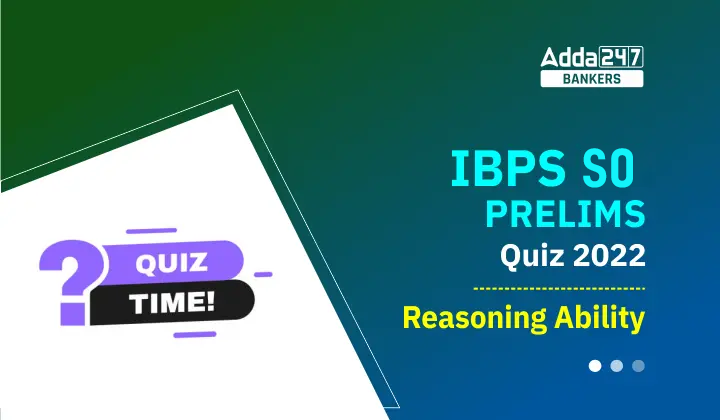Directions (1-5): Study the following arrangement of symbols, digits and letters carefully to answer these given questions.
R € 9 3 S 6 H # 7 K $ L 2 ¥ B M J © 4 5 E 8 @ G π A
Q1. If all the numbers are deleted from the above arrangement, then which of the following element will be seventh to the left of fifth from the right end?
(a) K
(b) ¥
(c) B
(d) $
(e) None of these
Q2. How many such numbers are there in the above arrangement each of which is immediately preceded by a symbol?
(a) One
(b) Two
(c) Three
(d) Four
(e) None of these
Q3. How many such symbols are there in the above arrangement each of which is immediately preceded by a number and immediately followed by a consonant?
(a) two
(b) four
(c) one
(d) three
(e) None
Q4. If all the symbols are deleted from the above arrangement, then which of the following element will be the fourth to the right of twelfth from the right end?
(a) B
(b) J
(c) 2
(d) M
(e) None of these
Q5. Which of the following element is 6th to the left of the element which is 18th from the left end?
(a) $
(b) 2
(c) L
(d) M
(e) None of these
Directions (6-10): Study the following alphanumeric series carefully and answer the questions given below:
A 1 & U V # F 3 S * 7 B $ G 2 * 8 M 3 2 D 8 % N 2 4 5 H @ 5 Y 5
Q6. How many such numbers are there which is preceded by alphabets and followed by symbols?
(a) One
(b) Two
(c) Three
(d) Four
(e) None
Q7. Which of the following element is 21st from right end of the series?
(a) $
(b) G
(c) 2
(d) 7
(e) None of these
Q8. If all symbols are eliminated from the series, then, which of the following element is 15th from the left end of the series?
(a) 3
(b) D
(c) 8
(d) 2
(e) None of these
Q9. How many such symbols are there which is immediately preceded by numbers and followed by vowels?
(a) Two
(b) None
(c) One
(d) Four
(e) Three
Q10. If all numbers are eliminated from the series, then, which of the following element is 13th from the left end of the series?
(a) M
(b) N
(c) *
(d) @
(e) None of these
Directions (11-15): In these questions, relationship between different elements is show in the statements. The statements are followed by conclusions. Study the conclusions based on the given statements and select the appropriate answer:
(a) If only conclusion I follows.
(b) If only conclusion II follows.
(c) If either conclusion I or II follows
(d) If neither conclusion I nor II follows.
(e) If both conclusions I and II follow.
Q11. Statements: T<N≤P<O>R>Z=V≥I
Conclusion I: O>V
II: I<P
Q12. Statements: M<P≤C >I=G>Y=D>W
Conclusion I: M>Y
II: M≤Y
Q13. Statements: Z>S≥C>N =R>K<T=E>Y
Conclusion I: N=E
II: Z>K
Q14. Statements: A≤P=T≤U≥L>C=K>S≥V
Conclusion I: U≥A
II: V<U
Q15. Statements: T>W≤N=Z>D≥I>O≥K=J
Conclusion I: J<O
II: N≥I
Solutions
S1. Ans. (d)
S2. Ans. (c)
Sol. € 9, # 7, © 4
S3. Ans. (a)
Sol. 2 ¥ B, 8 @ G
S4. Ans. (d)
S5. Ans. (c)
S6. Ans. (c)
S7. Ans. (e)
S8. Ans. (d)
S9. Ans. (c)
S10. Ans. (a)
S11. Ans. (a)
Sol. I: O>V (True)
II: I<P (False)
S12. Ans. (c)
Sol. I: M>Y (False)
II: M≤Y (False)
S13. Ans. (b)
Sol. I: N=E (False)
II: Z>K (True)
S14. Ans. (e)
Sol. I: U≥A (True)
II: V<U (True)
S15. Ans. (d)
Sol. I: J<O (False)
II: N≥I (False)





 Profit, Loss & Discount – Concept + ...
Profit, Loss & Discount – Concept + ...
 Nainital Bank Recruitment 2025-26 Notifi...
Nainital Bank Recruitment 2025-26 Notifi...
 Daily Current Affairs Quiz 13 December 2...
Daily Current Affairs Quiz 13 December 2...








